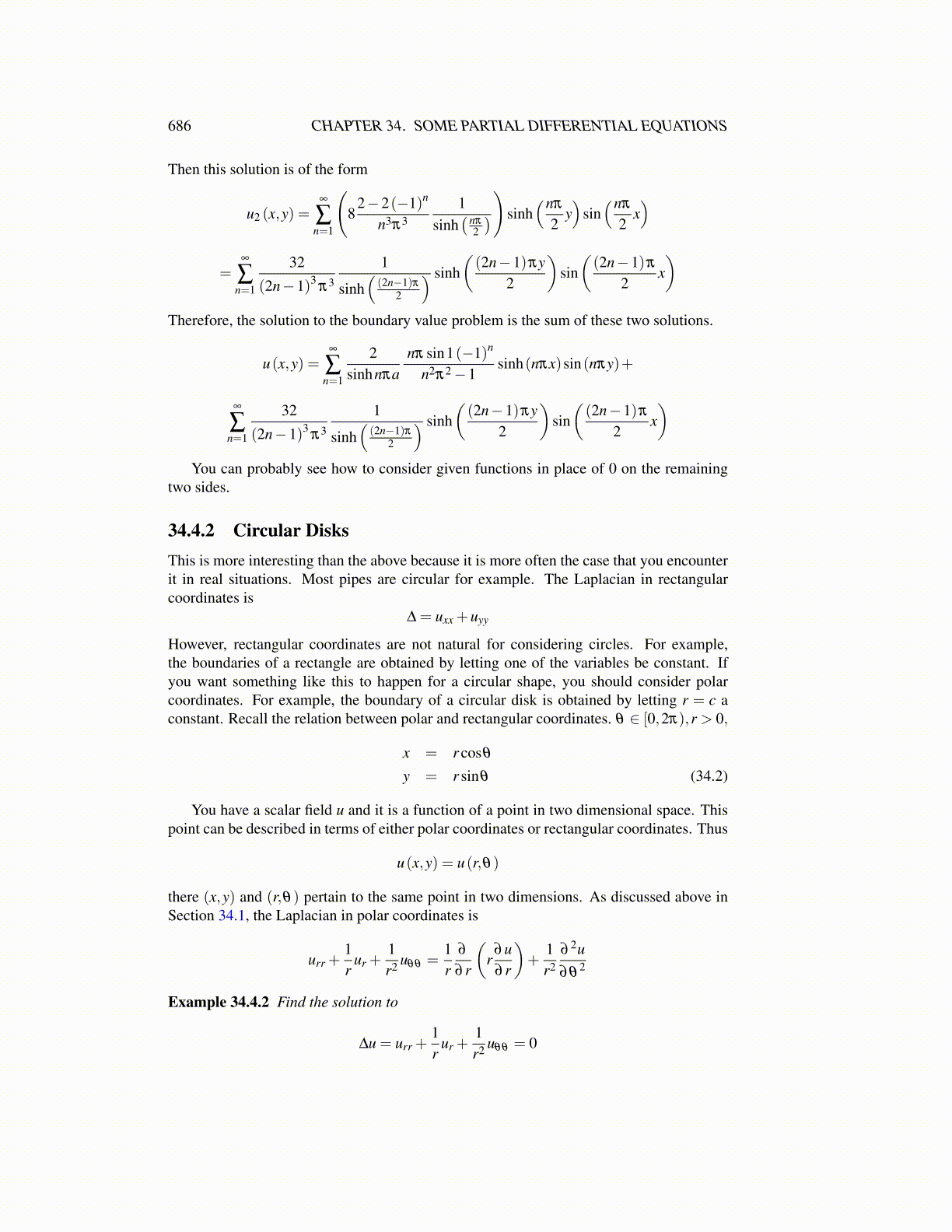
686 CHAPTER 34. SOME PARTIAL DIFFERENTIAL EQUATIONS
Then this solution is of the form
u2 (x,y) =∞
∑n=1
(8
2−2(−1)n
n3π31
sinh( nπ
2
))sinh(nπ
2y)
sin(nπ
2x)
=∞
∑n=1
32
(2n−1)3π3
1
sinh((2n−1)π
2
) sinh((2n−1)πy
2
)sin((2n−1)π
2x)
Therefore, the solution to the boundary value problem is the sum of these two solutions.
u(x,y) =∞
∑n=1
2sinhnπa
nπ sin1(−1)n
n2π2−1sinh(nπx)sin(nπy)+
∞
∑n=1
32
(2n−1)3π3
1
sinh((2n−1)π
2
) sinh((2n−1)πy
2
)sin((2n−1)π
2x)
You can probably see how to consider given functions in place of 0 on the remainingtwo sides.
34.4.2 Circular DisksThis is more interesting than the above because it is more often the case that you encounterit in real situations. Most pipes are circular for example. The Laplacian in rectangularcoordinates is
∆ = uxx +uyy
However, rectangular coordinates are not natural for considering circles. For example,the boundaries of a rectangle are obtained by letting one of the variables be constant. Ifyou want something like this to happen for a circular shape, you should consider polarcoordinates. For example, the boundary of a circular disk is obtained by letting r = c aconstant. Recall the relation between polar and rectangular coordinates. θ ∈ [0,2π),r > 0,
x = r cosθ
y = r sinθ (34.2)
You have a scalar field u and it is a function of a point in two dimensional space. Thispoint can be described in terms of either polar coordinates or rectangular coordinates. Thus
u(x,y) = u(r,θ)
there (x,y) and (r,θ) pertain to the same point in two dimensions. As discussed above inSection 34.1, the Laplacian in polar coordinates is
urr +1r
ur +1r2 uθθ =
1r
∂
∂ r
(r
∂u∂ r
)+
1r2
∂ 2u∂θ
2
Example 34.4.2 Find the solution to
∆u = urr +1r
ur +1r2 uθθ = 0